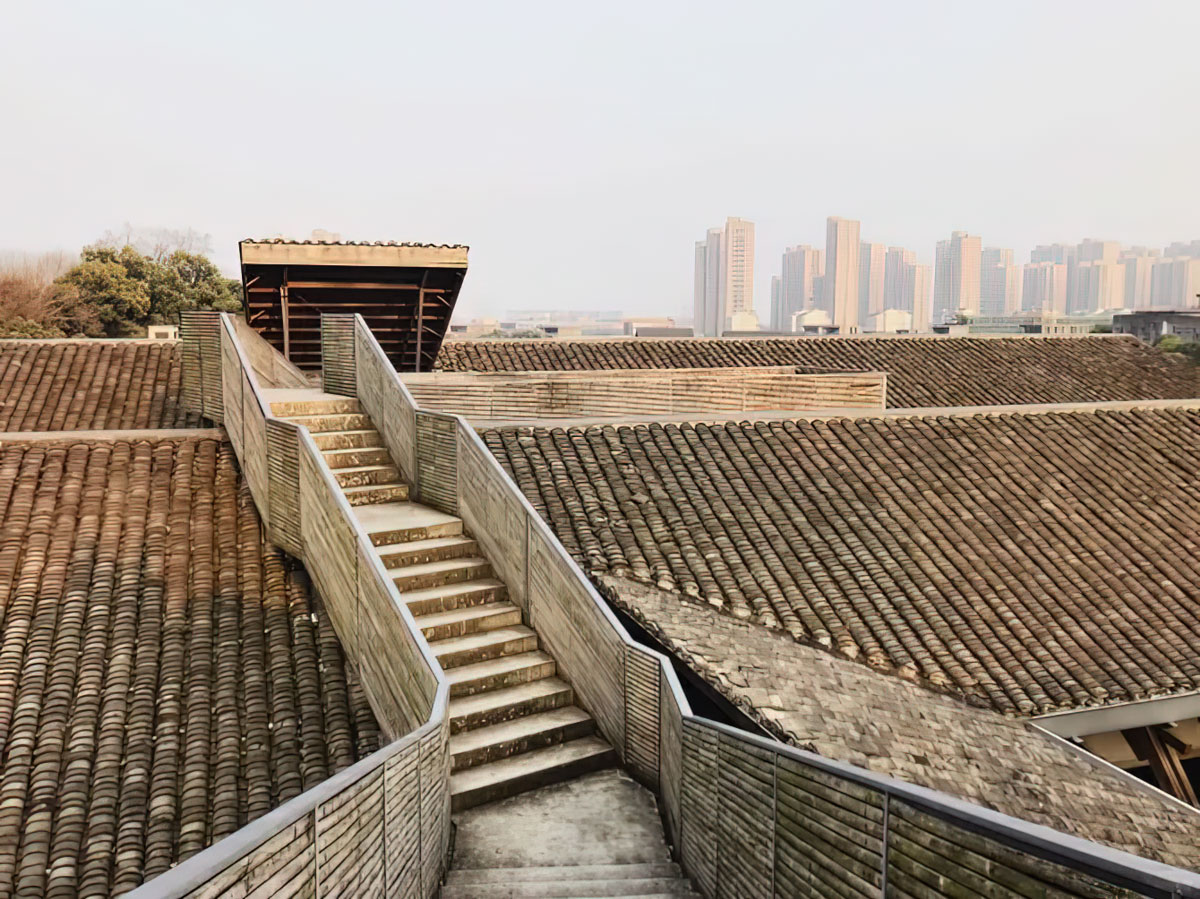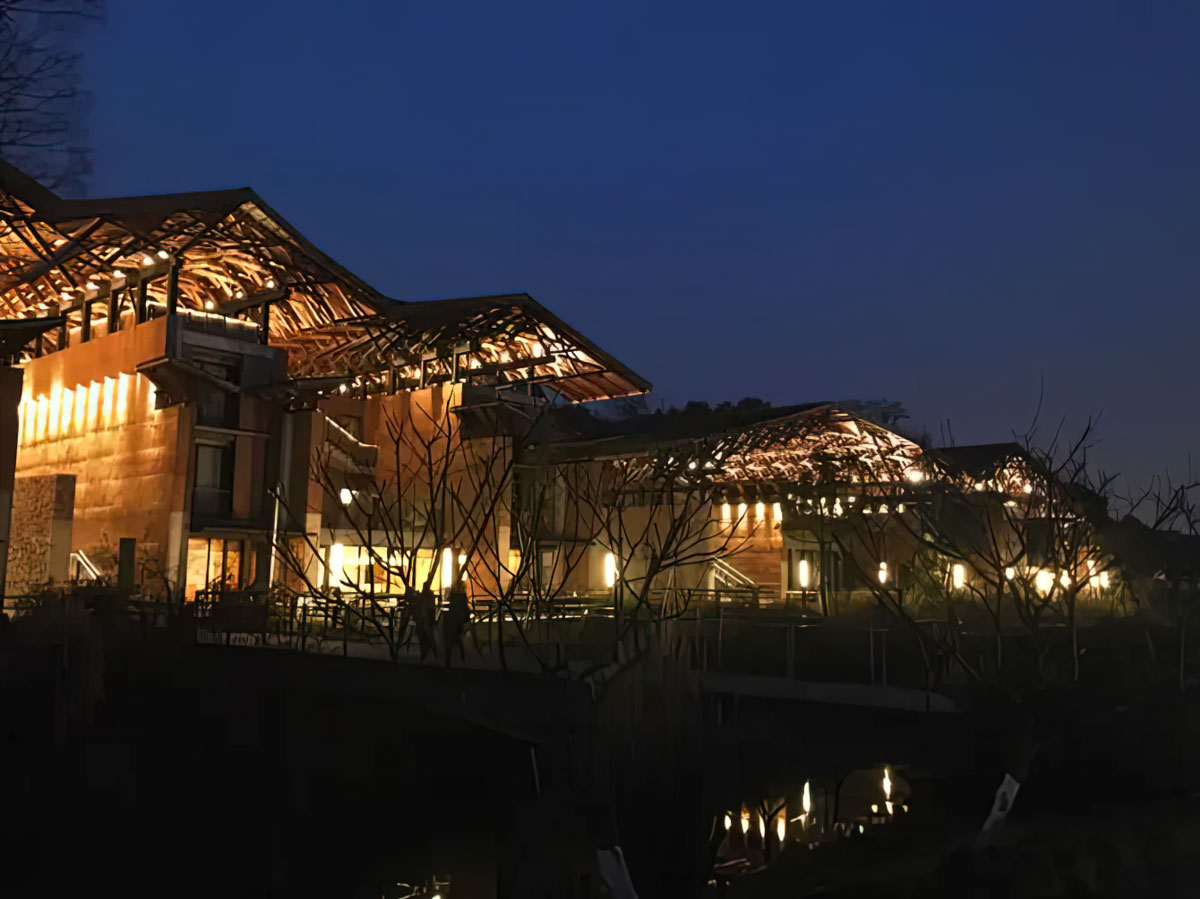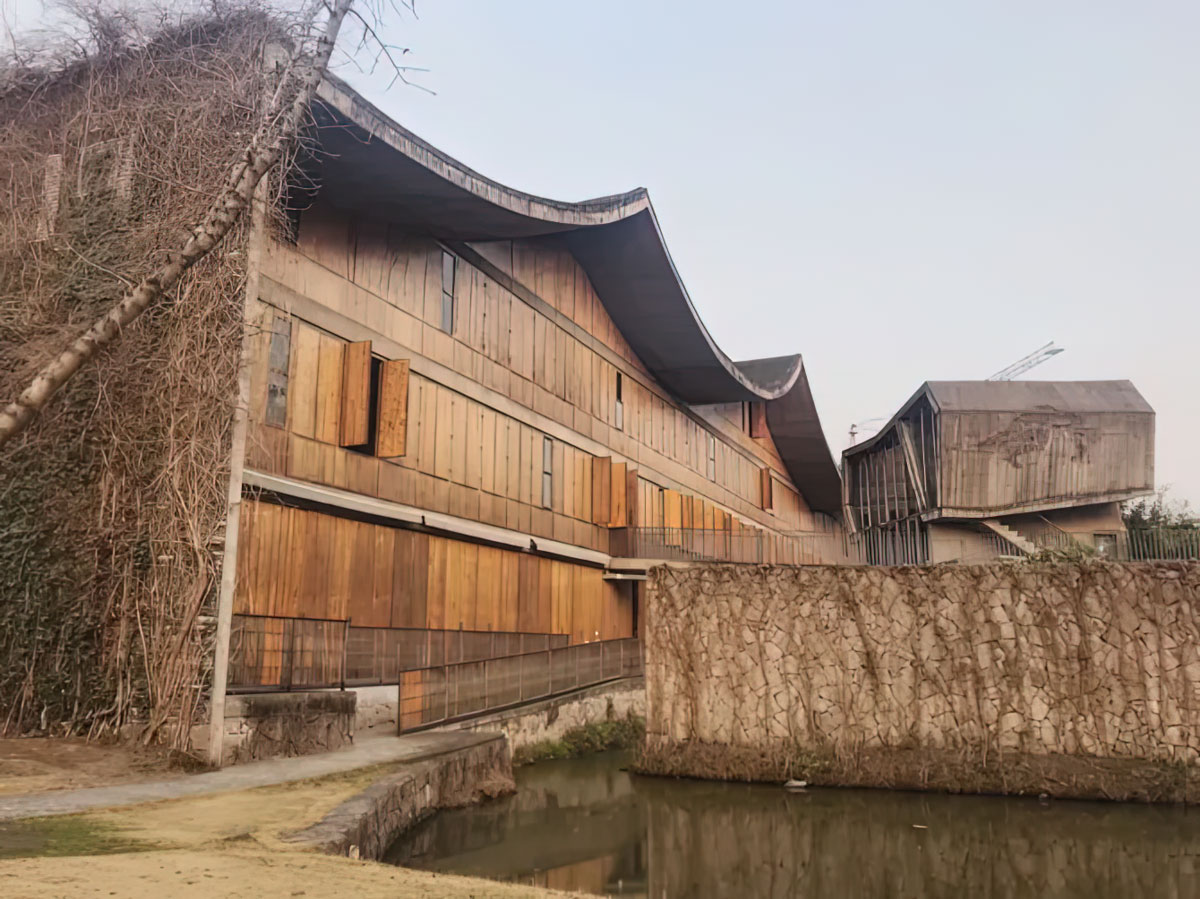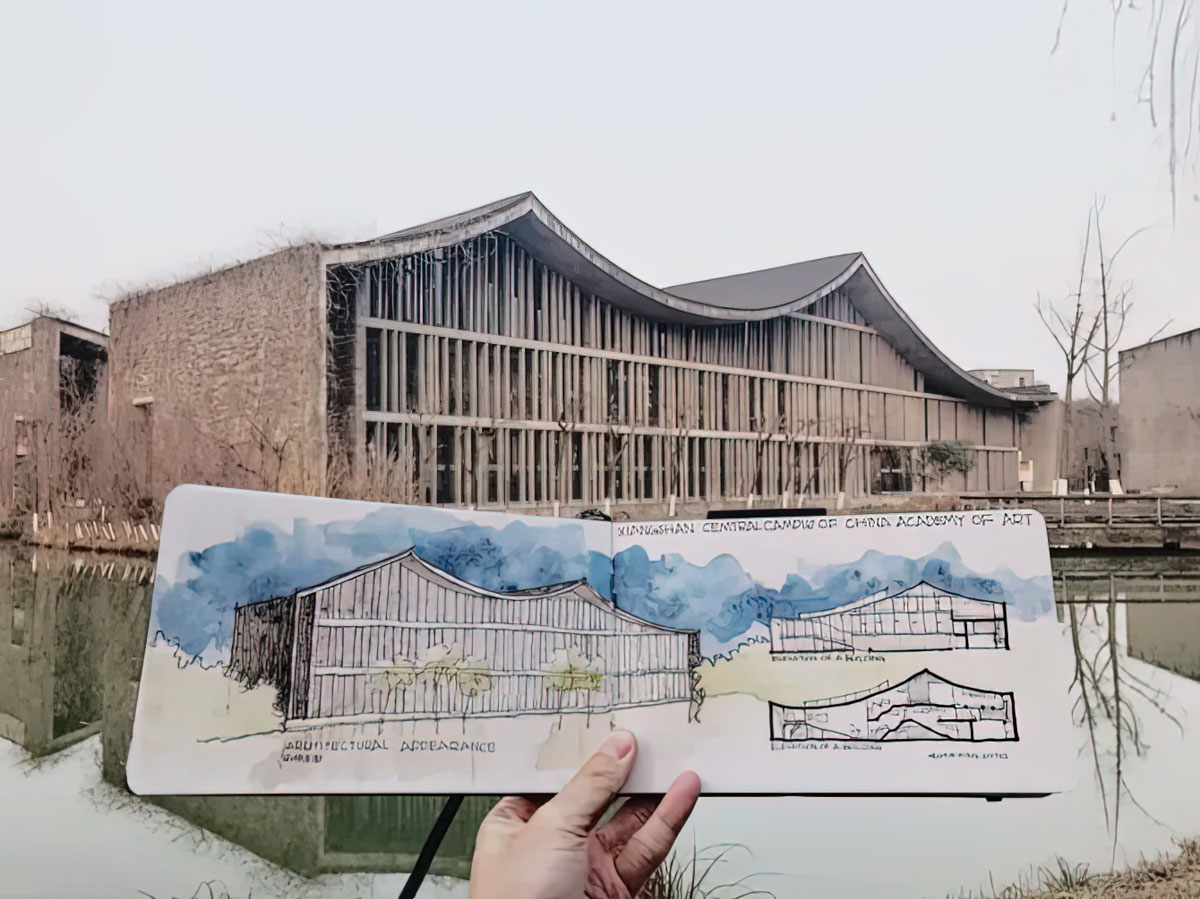ARCHITECTURE: Wang Shu
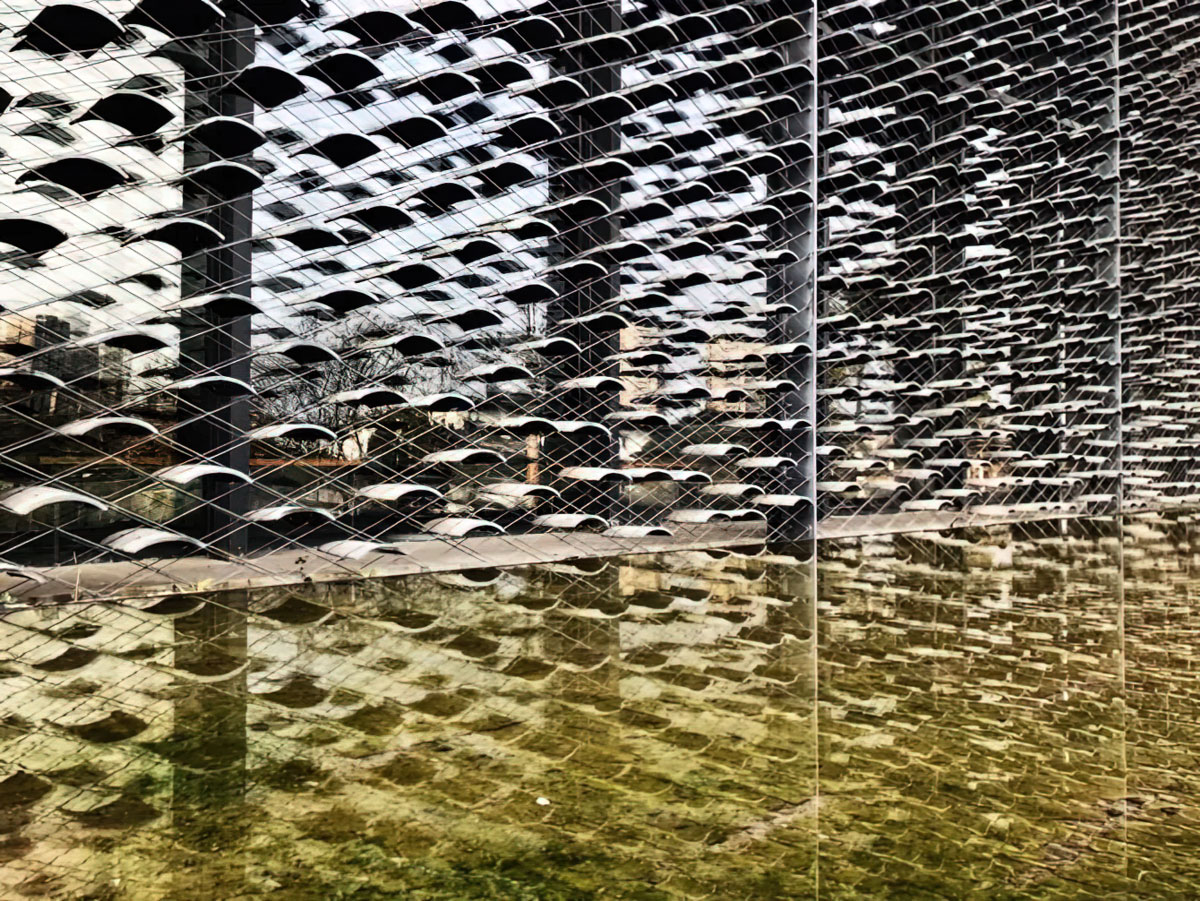 “Architecture as mountains” is how the Chinese architect, Wang Shu (4/11/1963- ) describes his design for the Ningbo Historic Museum. His buildings have the unique ability to evoke the past, without making direct references to history. With his practice partner and wife Lu Wenyu, they founded the firm Amateur Architecture Studio. In 2012, Wang became the first Chinese citizen to win the Pritzker Prize, the world’s Nobel Prize in architecture.
“Architecture as mountains” is how the Chinese architect, Wang Shu (4/11/1963- ) describes his design for the Ningbo Historic Museum. His buildings have the unique ability to evoke the past, without making direct references to history. With his practice partner and wife Lu Wenyu, they founded the firm Amateur Architecture Studio. In 2012, Wang became the first Chinese citizen to win the Pritzker Prize, the world’s Nobel Prize in architecture.
By Efi Michalarou
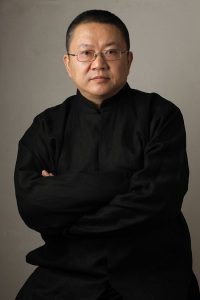 Architect and Professor in the School of Architecture of the China Academy of Art, was born in Urumqi, a city in Xinjiang, the western most province of China. He received his first degree in architecture in 1985 and his Masters degree in 1988, both from the Nan Nanjing Institute of Technology. Wang Shu and his wife, Lu Wenyu, founded Amateur Architecture Studio in 1997 in Hangzhou, China. The office name references the approach an amateur builder takes, one based on spontaneity, craft skills and cultural traditions. Wang Shu joined the faculty of the China Academy of Art in 2000 as a professor, became the Head of the Architecture Department in 2003, and was named Dean of the School of Architecture in 2007. In 2000, he designed the Library of Wenzheng College at Soochow University, which won the inaugural Architecture Art Award of China in 2004. His Five Scattered Houses in Ningbo won the Holcim Award for Sustainable Construction in the Asia Pacific in 2005. In 2008 his Vertical Courtyard Apartments in Hangzhou was nominated for the International Highrise Award. In 2008 he completed the Ningbo Museum, a project he won in 2004 after an international competition.The building’s facade is constructed entirely of recycled bricks, and its shape – resembling nearby mountains – reflects its natural setting. Wang’s other major projects include the Ningbo Museum of Art (2005), the Xiangshan campus of the China Academy of Art (2007) and the Old Town Conservation of Zhongshan Street, Hangzhou (2009). At the 2006 Venice Architecture Biennale, Amateur Architecture Studio expressed views of on-going demolitions in “Tiled Garden”, an installation made from 66,000 recycled tiles salvaged from demolition sites. Rather than looking toward the West for inspiration, as many of Shu’s contemporaries do, his work is rooted in the context of Chinese history and culture. His architecture has been described as “Opening new horizons while at the same time resonates with place and memory”, experimental, and as a rare example of critical regionalism in China. His awards include: the Architecture Art Award of China (2003), German-based International Highrise Award (2008), Gold Medal of Architecture from the l’Académie d’Architecture of France (2011), the Schelling Architecture Prize (2010), Pritker Architecture Prize (2012). Wang Shu has often explained in lectures and interviews that “To me architecture is spontaneous for the simple reason that architecture is a matter of everyday life. When I say that I build a ‘house’ instead of a ‘building’, I am thinking of something that is closer to life, everyday life. When I named my studio ‘Amateur Architecture’, it was to emphasize the spontaneous and experimental aspects of my work, as opposed to being ‘official and monumental’”.
Architect and Professor in the School of Architecture of the China Academy of Art, was born in Urumqi, a city in Xinjiang, the western most province of China. He received his first degree in architecture in 1985 and his Masters degree in 1988, both from the Nan Nanjing Institute of Technology. Wang Shu and his wife, Lu Wenyu, founded Amateur Architecture Studio in 1997 in Hangzhou, China. The office name references the approach an amateur builder takes, one based on spontaneity, craft skills and cultural traditions. Wang Shu joined the faculty of the China Academy of Art in 2000 as a professor, became the Head of the Architecture Department in 2003, and was named Dean of the School of Architecture in 2007. In 2000, he designed the Library of Wenzheng College at Soochow University, which won the inaugural Architecture Art Award of China in 2004. His Five Scattered Houses in Ningbo won the Holcim Award for Sustainable Construction in the Asia Pacific in 2005. In 2008 his Vertical Courtyard Apartments in Hangzhou was nominated for the International Highrise Award. In 2008 he completed the Ningbo Museum, a project he won in 2004 after an international competition.The building’s facade is constructed entirely of recycled bricks, and its shape – resembling nearby mountains – reflects its natural setting. Wang’s other major projects include the Ningbo Museum of Art (2005), the Xiangshan campus of the China Academy of Art (2007) and the Old Town Conservation of Zhongshan Street, Hangzhou (2009). At the 2006 Venice Architecture Biennale, Amateur Architecture Studio expressed views of on-going demolitions in “Tiled Garden”, an installation made from 66,000 recycled tiles salvaged from demolition sites. Rather than looking toward the West for inspiration, as many of Shu’s contemporaries do, his work is rooted in the context of Chinese history and culture. His architecture has been described as “Opening new horizons while at the same time resonates with place and memory”, experimental, and as a rare example of critical regionalism in China. His awards include: the Architecture Art Award of China (2003), German-based International Highrise Award (2008), Gold Medal of Architecture from the l’Académie d’Architecture of France (2011), the Schelling Architecture Prize (2010), Pritker Architecture Prize (2012). Wang Shu has often explained in lectures and interviews that “To me architecture is spontaneous for the simple reason that architecture is a matter of everyday life. When I say that I build a ‘house’ instead of a ‘building’, I am thinking of something that is closer to life, everyday life. When I named my studio ‘Amateur Architecture’, it was to emphasize the spontaneous and experimental aspects of my work, as opposed to being ‘official and monumental’”.


